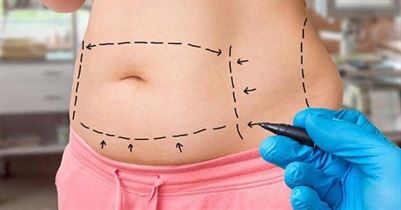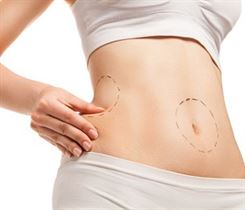Need Help?
Please Feel Free To Contact Us. We Will Get Back To You With 1-2 Business Days.
info@aakaraesthetics.com
9890844400
Liposuction Surgery in Nashik
Liposuction Surgery is a cosmetic procedure whereby excess fat is removed from under the skin from various body parts. A cannula and a suction device is used. The most common areas from where fat is removed using this technique are buttocks, arms, neck, thighs, and abdomen. This surgery is performed to remove stubborn fat pockets which do not go away from exercise and diet control. It is used for improving body shape and size and achieves a better appearance.
Liposuction Surgery is also referred to as body contouring and can be done on cheeks, necks, ankles, and breasts. Liposuction was performed for the first time in the early 1980’s and under general anesthesia. At that time, these surgeries were not very safe and led to life-threatening complications. New techniques and treatment revolutionized liposuction making them immensely popular and very safe.

Liposuction Procedure
- Can be performed as an outpatient or hospital.
- Liposuction of smaller volumes is done as outpatient.
- Larger volumes require hospitalization.
- Surgery time is 1-4 hours depending on areas to be treated.

A surgeon makes markings on the skin to earmark the areas to be treated. Anesthesia is administered depending on the method to be used.
Tumescent technique
A fluid which consists of salt solution or local anesthesia along with epinephrine is administered to the area which requires treatment. Small incisions are made and a cannula is inserted. The cannula is then attached to a vacuum pump which is used to suction out the fat cells when the surgeon moves it to and fro. Once the fat is removed, small drainage tubes are inserted to remove accumulated body fluid. Blood transfusion of IV fluid replacement may be needed if a lot of blood is lost.
Fat which is removed should not exceed 5 liters particularly in patients with comorbidities. Larger the volume of fat removed, higher the chances of complications. It arises from the fact that general anesthesia is used in large removal as compared to local anesthesia for small volume removal.
Bandages are applied to keep bleeding in check. They are left for two weeks. A patient stays in the hospital for a night depending on the volume of fat removed.
A surgeon will take a full history of the patient before going ahead with the procedure including prior surgeries and allergy from the medicines.
Fast facts on liposuction
Here are some key points about liposuction. More detail is in the main article.
- The operation is normally carried out under general anesthesia.
- Liposuction is not a weight-loss tool but a cosmetic procedure with subtle effects.
- Risks include infection and scarring
- Liposuction can be used to treat some medical conditions.
Am I a Good Candidate?
You’ll want to have realistic expectations. Liposuction won’t get rid of cellulite, so if you hoped you’d come out of surgery without any, you’re out of luck.
Liposuction is a surgical procedure, and with it comes risks. So you need to be in good health before you get it. That means you must at least:
- Be within 30% of your ideal weight
- Have firm, elastic skin
- Not smoke
Doctors don’t recommend the procedure if you have health problems with blood flow or have heart disease, diabetes, or a weak immune system.
What Should I Know Beforehand?
The first step is to consult with your surgeon. Talk about your goals, the options, the risks and benefits, and the costs. Ask all your questions.
If you decide to go ahead with liposuction, your surgeon will give you instructions on how to prepare for it. These may include diet and alcohol restrictions.
Tell your surgeon about any allergies you have and any medications you take, including over-the-counter and herbal supplements. They will likely recommend you stop taking certain meds, such as blood thinners and certain painkillers several weeks before surgery.
What Should I Expect?
Your liposuction may take place at your doctor’s office or a surgery center. Make sure that the place where you’re getting it done is accredited, and is known for its professional standards, safety and good results.
- You’ll go home the day of the procedure. Make sure to have someone drive you home afterward. (If you’re having a lot of fat removed, you should get the surgery done in a hospital, where you might stay overnight).
- Before your liposuction starts, your doctor might mark the areas of your body that will be treated. They may also take photos to use later for before-and-after comparisons.
Benefits
Liposuction is normally done for cosmetic purposes, but it is sometimes used to treat certain conditions.
These include:
- Lymphedema: A chronic, or long-term, condition in which excess fluid known as lymph collects in tissues, causing edema, or swelling. The edema commonly occurs in the arms or legs. Liposuction is sometimes used to reduce swelling, discomfort, and pain.
- Gynecomastia: Sometimes fat accumulates under a man’s breasts.
- Lipodystrophy syndrome: Fat accumulates in one part of the body and is lost in another. Liposuction can improve the patient’s appearance by providing a more natural looking body fat distribution.
- Extreme weight loss after obesity: A person with morbid obesity who loses at least 40 percent of their BMI may need treatment to remove excess skin and other abnormalities.
- Lipomas: These are benign, fatty tumors.
What are the steps of a liposuction procedure?
The liposuction procedure includes the following steps:
Step 1 – Anesthesia
Medications are administered for your comfort during the surgical procedure. The choices include local anesthesia, intravenous sedation and general anesthesia. Your doctor will recommend the best choice for you.
Step 2 – The incision
Liposuction is performed through small, inconspicuous incisions.
First, diluted local anesthesia is infused to reduce bleeding and trauma. Then a thin hollow tube, or cannula, is inserted through the incisions to loosen excess fat using a controlled back and forth motion. The dislodged fat is then suctioned out of the body using a surgical vacuum or syringe attached to the cannula.
Problem areas that can be addressed with liposuction
Step 3 – See the results
Your improved body contour will be apparent once the swelling and fluid retention commonly experienced following liposuction subside. Get more information about liposuction results.
After the liposuction operation
Share on PinteresAfter the operation, the patient might experience numbness in some areas.
- Anesthetic: Those who have a general anesthetic usually spend the night in hospital. Those who had a local anesthetic may be able to leave hospital on the same day.
- Support bandages: Either an elasticated support corset or bandages will be fitted for the targeted area.
- Antibiotics: These may be given immediately after the operation.
- Painkillers: Analgesics can help relieve pain and inflammation.
- Stitches: The surgeon will remove the stitches in a follow-up appointment.
- Bruising: Significant bruising may occur in the targeted area.
- Numbness: There may be numbness in the area where fat was removed. This should improve in 6 to 8 weeks.
Results
The results of liposuction will not be clear until the inflammation goes down. In some cases, this may take several months. Most of the swelling settles after about 4 weeks, and the area where fat was removed should appear less bulky.
People who maintain their weight can usually expect permanent results. Those who gain weight after the procedure may find that their fat distribution alters. Those who previously had fat accumulating in their hips might find that their buttocks become the new problem area.
